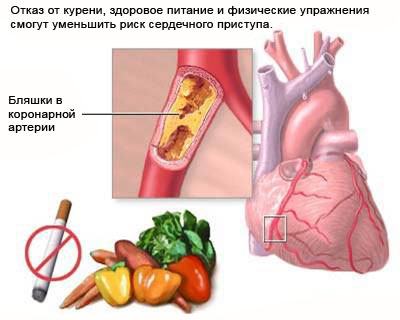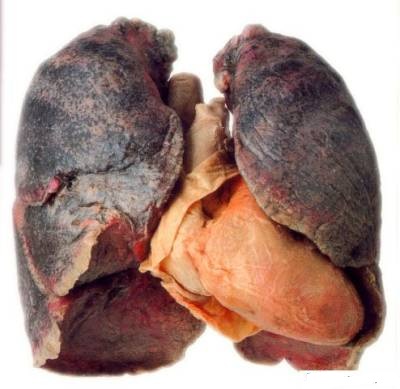Why is smoking harmful to health?

Because for every 100 grams of tobacco, 5-7 grams of tobacco tar is released when it burns. It consists of benzpyrene (a carcinogen of hazard class 1), benzapocene and other resins that contribute to cancer. A person who smokes one pack of cigarettes or cigarettes daily gets 700-800 grams of tar per year.
Smoking also harms health because: of the radioactive elements that penetrate into the body of the smoker, the greatest danger is polonium-210. Said element is absorbed by tobacco leaves from the air. When dried, the concentration of polonium-210 in tobacco is even higher. Radioactive polonium from tobacco smoke accumulates in the bronchi and lungs, kidneys, and liver. The half-life of this element is sufficient to allow heavy smokers to concentrate the element in quantities that far exceed the established acceptable limits.
Smoking is bad for your health because when you burn tobacco, you release carbon monoxide (carbon monoxide), which binds the respiratory blood pigment hemoglobin. It produces carboxyhemoglobin. He can't stand oxygen. This is why the body's tissue respiration processes are disrupted. When you smoke a pack of cigarettes, a person injects more than 400 milliliters of carbon monoxide into the body. Therefore, the concentration of carboxyhemoglobin in the blood rises to 7-10%. And it turns out that all the organs and systems of the smoker's body are constantly sitting on a hungry oxygen ration.

A smoker harms more than his own health. People who do not smoke but who live with them in a closed, poorly ventilated environment inhale up to 80% of the substances in cigarette smoke. Passive smoking — tobacco smog — is the same as smoking, especially harmful to pregnant women and breastfeeding mothers, children and adolescents, the elderly and those with chronic cardiovascular and respiratory diseases.
Researchers in the experiment and clinic have established that the respiratory organs are the first to take on tobacco assault. Lung cancer is 10 times more common among smokers than non-smokers. Of the 100 adults who develop pulmonary tuberculosis, 95 have a long history of smoking.
- / z pages
- Home
- Smoking
- Smoking is a terrifying look at smokers rotting alive
- Girls and Smoking
- Vaping - electronic cigarette
- Effects of smoking on humans
- Bad breath in smokers (halitosis)
- Evali (ewali), a smoker’s lung disease
- Alcohol disorders and their treatment
- Drugs as dangerous synthetic opioids

Smoking is harmful to health because nicotine and other components of tobacco also affect the digestive organs. Research and clinical evidence suggest that long-term smoking contributes to peptic ulcer disease of the stomach and duodenum.
In a person who smokes a lot and for a long time, the stomach vessels are constantly cramped. As a result, stomach tissues do not have adequate oxygen and nutrients, and secretion of gastric juice is impaired. And eventually, gastritis or ulcer disease. A survey was carried out in a Moscow clinic, which showed that 69% of patients with ulcer disease had a direct link with smoking in the onset and development of the disease. Of the patients operated on for perforated ulcers at the clinic, about 90% were heavy smokers.
Smoking is bad for your health because components of tobacco smoke are bad for the cardiovascular system. Heart and vascular involvement in heavy, systemic smokers typically results from disturbances of the neurodevelopmental and humoral regulation of the cardiovascular system.
The data given by the researchers on the dependence of the state of the heart vessels on the number of cigarettes smoked is impressive. Those who smoke an average of 38 packs of cigarettes per month have one heart artery, 45 packs have two arteries, and 67 packs have three arteries. As you can see, the more a person smokes, the more negative it affects his health.
Let's focus on only two substances - nicotine and carbon monoxide, which are extremely harmful to the health of the smoker and affect the cardiovascular activity. When you smoke a pack of cigarettes, you get 0.09 grams of nicotine and 369 cubic centimeters of carbon monoxide. Nicotine causes vasoconstriction. It may increase blood pressure. And how does the heart react to it? The rhythm of its contractions is increasing, and there are interruptions.

Nicotine also enhances the function of endocrine glands that it controls by stimulating the sympathetic nervous system. Where does this lead? Excessive amounts of biologically active substances are released into the blood, which adversely affects the heart and blood vessels and contributes, in particular, to the narrowing of the arteries supplying the vital organs - the heart, brain and kidneys. This should be known to those who in an unfavorable situation, in the moment of nervous overstrain, stress is in a hurry to smoke a cigarette for "comfort". But let's figure out what it's really like to be "calm." A nervous surge is usually accompanied by a sudden increase in certain hormones in the blood (norepinephrine, epinephrine). In excess, they damage the heart and blood vessels. Nicotine also stimulates the release of hormones into the blood. Their destructive effects are therefore increased. So objectively, the body begins to experience even more stress and thus smoking is harmful to health.
More recently, there has been evidence that smoking increases clotting and reduces blood clotting (particularly in women). And that leads to clotting.
As for carbon monoxide, its damage has been known since ancient times. However, only relatively recently has it been shown to combine with hemoglobin from red blood cells when ingested. A stable compound, carboxyhemoglobin, forms. The loaded RBCs are no longer able to carry oxygen to the tissues - oxygen deficiency occurs.
Heavy smokers have a blood carboxyhemoglobin concentration of 7-10%. This reduces by one-third or even half the oxygen supply to the heart muscle.

Now let's take this situation: despite the doctor's injunctions, a person suffering from coronary heart disease continues to smoke. Because of the narrowing and spasm of the coronary vessels, the heart is not getting enough oxygen. Burned cigarettes (because of a decrease in circulating oxygen) further increase the deficiency. Smoking is especially dangerous in physical or emotional environments. A person usually smokes cigarettes to take a break from work, rest, or calm down, but tobacco smoke "hits" the heart. Heart pain may occur, and an increased heartbeat may occur.
Numerous experiments have shown that after a cigarette or cigarette is smoked, the number of corticosteroids circulating in the blood, as well as epinephrine and norepinephrine, increases dramatically compared to the norm, they seriously harm the health of the smoker. These biologically active substances cause the heart muscle to work at a faster rate. This increases the minute volume of the heart, increases blood pressure, and increases the speed at which the myocardium contracts.
It is estimated that the heart of a smoker makes 12-15 thousand more contractions per day than the heart of a non-smoker. Already, such a regime is not economical, since a constant excessive load leads to premature wear of the heart muscle. But to make matters worse, the myocardium is not getting the oxygen it needs to work so hard.
The smoker’s coronary vessels are permanently spasmed, narrowed, and thus have very difficult blood flow. The blood circulating in the smoker’s body is low in oxygen, because almost 25% of hemoglobin is cut off from the respiratory process: they are forced to carry an unnecessary ballast - carbon monoxide molecules. That's why smokers develop coronary heart disease so early, angina. And it is quite reasonable that among the risk factors for a heart attack, experts are one of the first to call smoking. Strong evidence of this is that heart attacks at a relatively young age (40-50 years) occur exclusively in smokers. This proves once again that smoking is harmful to health!
Tobacco hobbyists are much more vulnerable to hypertension than non-smokers, and are more likely to suffer from hypertension crises, cerebrovascular disease, and stroke.
A few words about "pleasant" sensations, allegedly occurring during smoking. They're deceptive. Smoking does not add strength, but on the contrary, reduces working capacity. A study conducted by employees of the Institute of Preventive Cardiology of the WCPC AMS of the USSR showed that during training on the cycle ergometer, smokers can perform significantly less work than non-smokers. The less economical mode of operation of the smoker's heart muscle under load conditions is evidenced by the higher heart rate than that of non-smokers.

Smoking is harmful to health since tobacco potion, in addition, affects the central nervous system, the glands of internal secretion, reduces sexual function, vision, hearing... There is virtually no important organ or system in the human body that does not suffer from chronic tobacco poisoning.
The great importance of vitamin-C in the life of the body is well known. Numerous studies suggest that smokers have vitamin-C deficiency caused by poor absorption of ascorbic acid. It should be reminded that C-vitamin activity is equally manifested by both ascorbic acid and its oxidized form - dehydroascorbic acid. Normally, vitamin C passes through the small-bowel membrane as dehydroascorbic acid, which is then readily converted back to ascorbic acid. It turned out that in smokers, the process of turning dehydroascorbic acid into ascorbic acid is sharply depressed. Because of this, even when vitamin C is given sufficiently, the body is constantly deficient.
Researchers asked, which of the many substances produced by tobacco combustion is most responsible for the violation of the C-vitamin balance in the body?

The main culprit was acrolein, a component of tobacco smoke. It is this substance that, by easily entering the body, prevents the conversion of dehydroascorbic acid into ascorbic acid. Getting into the body even in small quantities (when a person smokes little), acrolein acts for a long time and does its black business. Therefore, C-hypovitaminosis occurs not only in heavy smokers but also in people who smoke fewer than 15 cigarettes a day. Moreover, vitamin-C deficiency sometimes develops in passive smokers, in those who do not smoke but are exposed to daily tobacco smoke.
Irritability, rapid fatigue, poor appetite, sleep disturbances, frequent cold diseases of the smoker are explained by C-hypovitaminosis caused by smoking. Smoking is harmful to health by destroying essential vitamin C.
Smoking is harmful to health because it is one of the main causes of extremely serious disease - obliterative endarteritis. This disorder affects the vascular system in the legs, sometimes leading to complete closure of the vessel lumen and gangrene. In people who do not smoke themselves, this disease is extremely rare (in 14% of cases in smokers, and in 0.3% in nonsmokers).
- / z pages
- Home
- Smoking
- Smoking is a terrifying look at smokers rotting alive
- Girls and Smoking
- Vaping - electronic cigarette
- Effects of smoking on humans
- Evali (ewali), a smoker’s lung disease
- Bad breath in smokers (halitosis)
- Alcohol disorders and their treatment
- Drugs as dangerous synthetic opioids
Shocking photos of smokers









